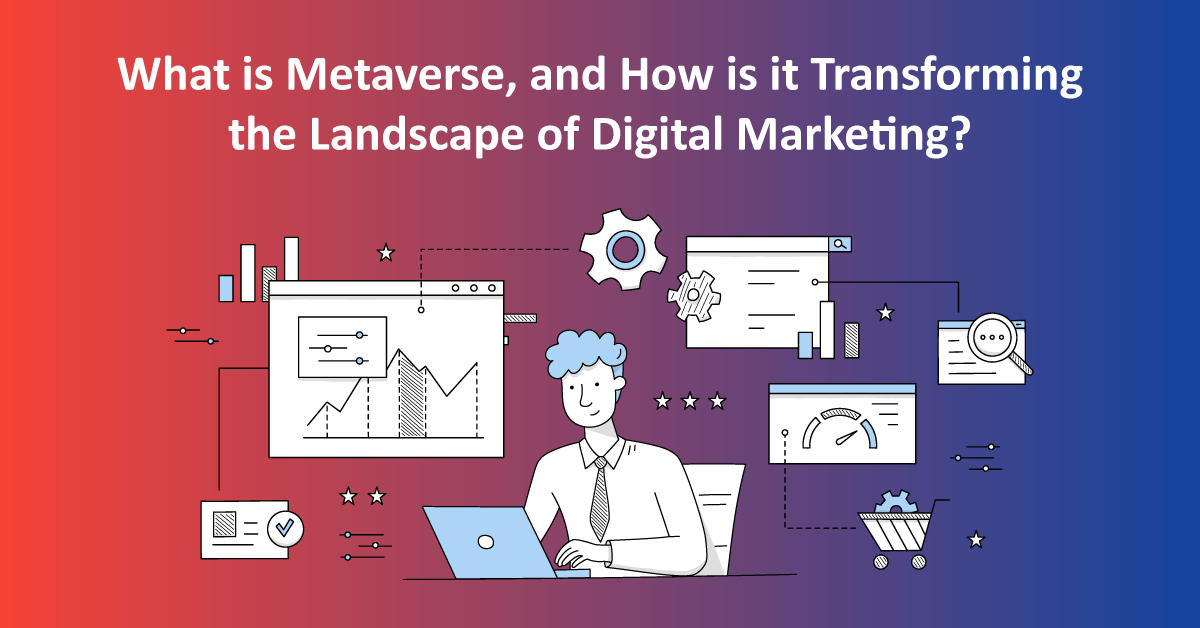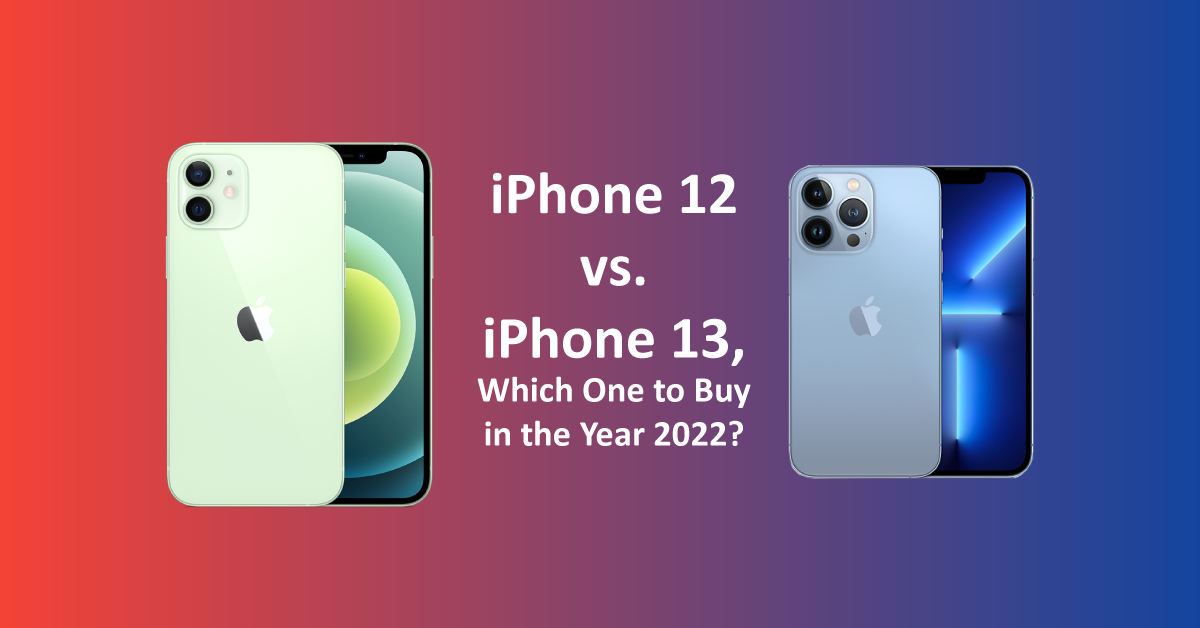What is Metaverse, and How is it Transforming the Landscape of Digital Marketing?
March 14, 2022

The term “Metaverse” has gained a great deal of attention in recent times. Recently, Facebook announced that it was renamed the brand as “Meta.”
Metaverse acts as an extension to the physical world. As a result, metaverse offers a world of endless possibilities.
Metaverse is a concept of an online and virtual 3D universe that includes different virtual spaces. To understand in simpler terms, metaverse is a network of virtual worlds that focuses on socially connecting online avatars. The universal virtual world is assisted by the use of virtual and augmented reality headsets. Metaverse allows users to meet and greet in virtual 3D spaces.
Metaverse is a digital twin of something that exists in real life.
The initial origins of the metaverse can be found in a science-fiction novel, ‘Snow Crash,’ written by Neal Stephenson in 1992. So, consider metaverse was once a fictional concept, and look where we are with technological development.
Video games like second life and Fortnite are the example of the metaverse. These games are not completely based on the metaverse concept, but they are somewhat similar.

Real Examples of Metaverse
Metaverse has endless possibilities that are just amazing. Let’s look at some of the real-world examples that show us how metaverse is changing the digital scenario.
Augmented Reality
Augmented Reality or AR combines real world elements with digital augmentations. The AR concept is widely used in video games. One of the famous AR applications is Pokémon Go; this application lets the player catch Pokémon that appear in the actual world using a mobile phone’s camera.
AR is also advancing navigation systems; Google’s AR and VR allow users to experience real life with the help of AR and VR.
Metaverse in Pop Culture
More than just a game, Fortnite has become a virtual stage for users to hang out and attend concerts in the game. Some popular artists like Travis Scott and Ariana Grande, and many more have released the Soundwave Series, which features music worldwide. With the help of this series, players can access interactive in-game experiences.
Metaverse in Video Games
When talking about the involvement of metaverse, “Second Life” comes on top. In Second Life, users can create their digital avatars to explore the virtual world and interact with other users. One interesting feature in Second Life is that the users can even trade goods and services using Linden Dollar, which is an in-world currency.
How will metaverse Reshape Digital Marketing?
A new age of digital marketing is emerging, replacing traditional marketing and advertising tactics. Let’s see how brands focus on metaverse to transform the digital marketing landscape.
Roblox
The metaverse users spend a lot of time and even money in virtual environments. Take a look at Roblox; the platform allows its players to inhabit virtual worlds that are crafted by other users. Roblox has recently begun experimenting with an interactive advertisement that allows marketers more freedom than product placements.
Hyundai, a South Korean automotive company, has created its own Roblox level, wherein all the cars are their own. Hyundai wanted to leverage the benefit of a younger user involved in gaming to build a long-lasting relationship.
Roblox has 43 million active daily users; it becomes quite obvious for brands to collaborate with Roblox.
Changing Rules of Virtual Marketplaces
Apart from replicating our real world, certain changes are occurring regarding how users spend money in the metaverse. When we look back, a credit card used to cause a bit of trepidation, but not anymore. How times have changed.
Many people believe that it is quite strange to spend real money in a virtual world. However, as per a pool, 65% of Gen Z consumers have spent money on a virtual item like a piece of gear or accessory for character modifications that exists only within the limitations of the game. Such a consumer trait pushes brands to think outside the box to create unique digital marketing strategies.
This clearly states why brands like Balenciaga created their own video game platform called Afterworld: The Age of Tomorrow to present their recent collection. The game was designed in a partnership with the studio that developed Fortnite.
Players would begin their journey in a digital Balenciaga retail store, and upon progress in the game, new levels would unlock showcasing new season’s styles. Hence, Balenciaga was able to connect with a newer audience outside conventional channels due to an interactive and 3D experience.
Unique Way to gather data
Besides onboarding a new audience and increasing the organic reach, metaverse has brought another fresh opportunity for digital marketers to gather data and user behavior.
Online gaming is not a new phenomenon in the digital world. It has been in existence for years now, but the new feature that has brought metaverse to the masses comes via virtual reality (VR). What was once an old technology now has made its entry into millions of homes. It could cause escorting retail into the future where physical and digital experiences combine.
Suppose you have a digital avatar that can try on clothing; checking out new sofa sets in the virtual stores won’t make it easy for you to shop selectively without moving an inch. Instead, it allows you to try the stuff that is missing in e-commerce.
Today with the help of virtual reality systems, brands can easily measure user engagement in an advanced manner. Brands get real-time information about their likes and dislikes when the users observe and explore items in the virtual marketplace.
Metaverse Marketing has opened up new possibilities to market the product and get the new user base more efficiently. Brands are also able to determine how long users interact with their products.
Brands are aware now and are adapting the meta landscape to manage and increase user engagement.
Let’s talk about Nike; they are working on the virtual stores along with ‘downloadable virtual goods.’ As their product would enter new dimensions, Nike wanted to trademark the “swoosh logo” in order to preserve the brand.
Digital Campfires
We are living in the era of persistent innovation. You will notice an innovation every other day. The younger group of people are the drivers of change and innovation.
A couple of years back, social media challenges such as ASL Ice Bucket Challenge were quite popular. If you think they have died out, well, not really. Social media challenges still capture attention. The younger audience has a very short attention span and is more likely to be influenced by ideas or conversations on platforms like Roblox or discord.
In 2020, Harvard Business Review coined the term ‘digital campfires’, and who knows, it could be the future of modern marketing. The younger audience is moving away from conventional platforms like Instagram or Facebook over to platforms that provide them some privacy and no judgments.
The increasing disinterest towards traditional social media platforms and short attention span of the younger audience has made it quite expensive for brands to reach their target market and engage with customers.
In such a scenario, digital campfires come to the rescue as these are the ideal medium to copy the close consumer relationships and common experiences of metaverses.
Metaverse is Lucrative for Marketing
Metaverse is a relatively new phenomenon, so the costs of running a campaign are quite low. Hence making it lucrative for businesses to target the desired audience. According to statistics, there are approximately 3.4 billion online gamers, of which 27 percent are between the ages of 21-30.
Another advantage of the metaverse is that it does not limit marketing campaigns to physics principles. For example, just like an actual garden, Gucci’s virtual garden provides virtual themed rooms that give recognition to Gucci’s old marketing campaigns, but on the contrary to the rooms in Florence (a city in Italy), these rooms are not covered by ceiling but are open to the sky and covered by forests.
The possibilities are endless for digital marketers in or outside of metaverse, but it is the right time to leverage the opportunities that are coming out front because of the metaverse. While some brands have recognized the use case of the metaverse, its full potential is yet to be utilized. More exciting innovations in the digital marketing space are yet to come. Metaverse offers a bright future for the digital marketing space and plenty of room for innovation.











